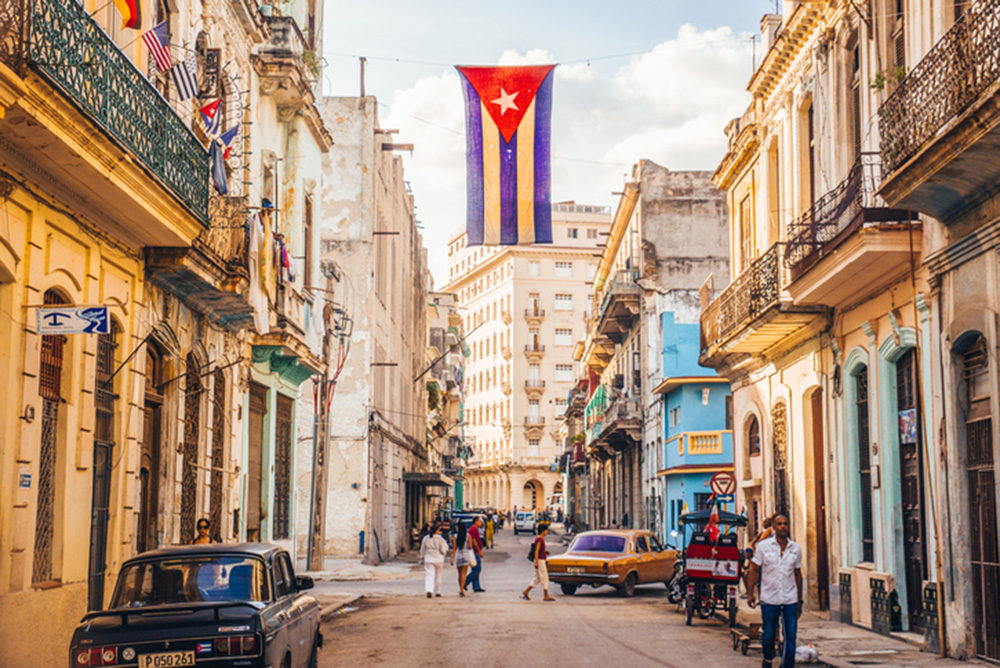
iStock
TOURISTS ENROUTE to Cuba are bombarded with the wonders of the country’s medical prowess: more doctors per capita than anywhere in the world; impressively low rates of heart disease and diabetes; and a cure for lung cancer!
The truth about each of these claims, however, is “muy complicado”—very complicated—a phrase tour guides intone repeatedly in answer to questions about everything from healthcare access to air pollution to the day’s touring schedule.
My cultural excuse for going to Cuba in December was the International Film Festival of New Latin American Cinema, but was mostly to celebrate my sister’s 60th birthday with a bunch of her college friends. Although the trip wasn’t focused on healthcare, I was in contact with a German medical resident in Havana and an American medical volunteer after returning. A trip bonus: my sister’s younger, more energetic and party-loving group, who make fewer references to getting older than mine, gave me a fresh outlook.
The best medical information about Cuba is available about the lung cancer treatment: it’s not a cure but is the first “vaccine” to combat lung cancer, developed by researchers in Cuba. Called CimaVax-EGF, the vaccine mobilizes the patient’s immune system to create antibodies against a protein that contributes to tumor growth.
To date, the vaccine has been given to some 5,000 patients worldwide who lived an average of three to eleven more months, longer for some. It is currently being tested at the Roswell Park Cancer Institute in Buffalo. Most exciting, such a vaccine could eventually transform lung and other cancers into chronic rather than deadly diseases.
In numbers of doctors, Cuba has the highest per capita and earns hefty fees by exporting medical care around the world. Doctors remaining in Cuba are offered a house and office to practice in small communities around the country, as well as no financial incentives to move elsewhere. Thus primary care doctors can become familiar with their patients and begin treating chronic health problems, such as elevated blood pressure, at the earliest signs, writes surgeon and former Republican Senator from Tennessee Bill Frist in Forbes magazine after traveling to Cuba twice in 2015.
Frist describes the “Cuban Health Paradox”—an impoverished country with medical expertise in demand worldwide, and a population with life expectancies rivaling those of much richer countries. Infant mortality rates are lower in Cuba than in the U.S. and much lower than in neighboring Latin American countries. And rates of measles vaccinations are higher than those in the U.S., an important consideration for tourists.
In addition, the government is credited with “providing access to education, housing, and nutrition—key non-medical or social determinants of health,” writes Frist. Cubans “boast ‘first world’ population health status’ because of a combination of attention to social and environmental factors of health paired with planned, accessible primary care.”
The potential downsides of Cuban medicine are also muy complicado. Frist reports shortages of basic medications like aspirin and antibiotics, which are unavailable or sold only on the black market. Others charge that patients must often buy their own sutures and provide bedsheets for hospital stays. Recent medical volunteers, however, say everyone has access to basic medications.
Meanwhile, the best-stocked drug store stopped doing business in 1962. The Museo Farmaceutico in Matanzas, founded in 1882, is a beautifully preserved apothecary shop, with shelves filled floor to (25-foot) ceiling with large glass jars labeled (and apparently containing) everything from laudanum and coca to cod liver oil.
Rates of diabetes and heart disease dropped significantly in the early 1990s during what some call the first “natural experiment” in “sustained population-wide weight loss”—caused by near-famine conditions that occurred after the loss of Soviet economic support. (The situation, called the “special period,” has been compared to that of North Korea; both countries are run by authoritarian regimes that denied food to ordinary people when the public food distribution collapsed.)
Since then, however, average weight has risen along with rates of related conditions, including heart disease. Organic gardens sprout throughout Havana but the produce is too expensive for most Cubans and goes mostly to private restaurants that cater to tourists and the country’s elite. Even in one of the best, though, a “vegetable- and-rice dish” included only olives and a few small pieces of green pepper.
While some say fresh fruit and vegetables are available to Cubans, grocery stores display very few; one had only a few shriveled watermelons. Some visiting doctors charge that Cubans simply prefer tastier fried food, and junk food consumption has been rising steadily over the past 20 years.
Rates of lung disease and asthma are high in Cuba, although reliable statistics are hard to come by. The air feels clean, even in Havana, and there is very little industry. But smoking (including cigars) is allowed almost everywhere. Those gorgeous pre-1959 cars spew all sorts of unfiltered exhaust, and the crumbling buildings where most people live are riddled with mold.
As for the low infant mortality rate, skeptics say pregnant women may be forced to undergo abortions if fetal abnormalities are detected. The rate of abortion is among the highest in Latin America, and abortions are permitted up to 26 weeks. Others suggest that doctors falsify infant and maternal mortality statistics out of fear of losing their jobs.
Finally, many Cubans practice Santeria, which combines beliefs and practices from African sects with those from established religions. Santeria offers spiritual as well as medical help, using mostly herbs and sacred stones, focusing mainly on GI and respiratory problems, inflammations and skin eruptions and the female reproductive system.
In all, Cuban medicine provides a model of primary care that countries like the U.S. could do well to study. On the other hand, travelers are advised to bring any medications they might need during the trip, especially those for treating digestive issues related to consuming, on purpose or by accident, local food and water.
—Mary Carpenter
Read more of our well-being columns right here.
